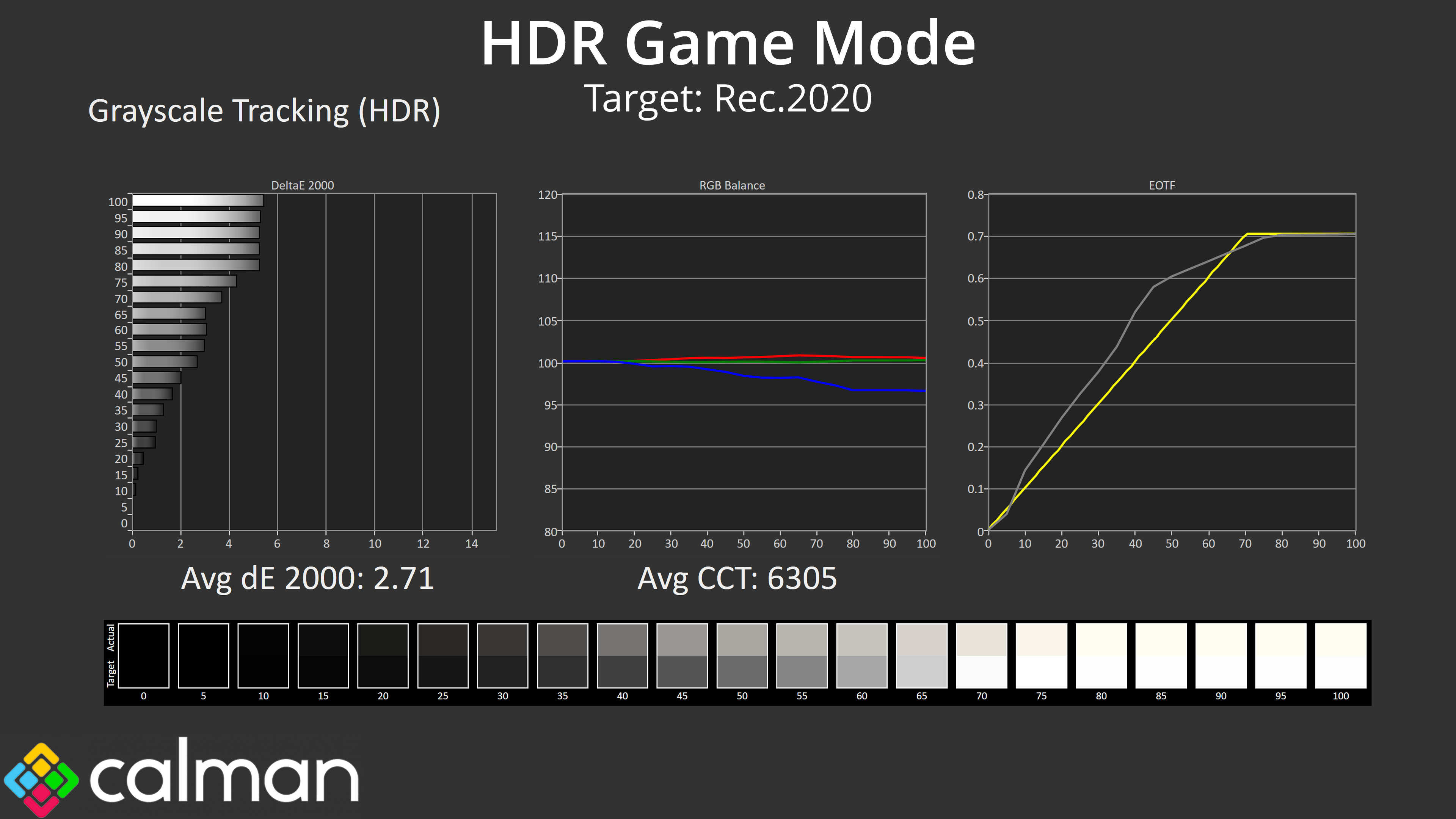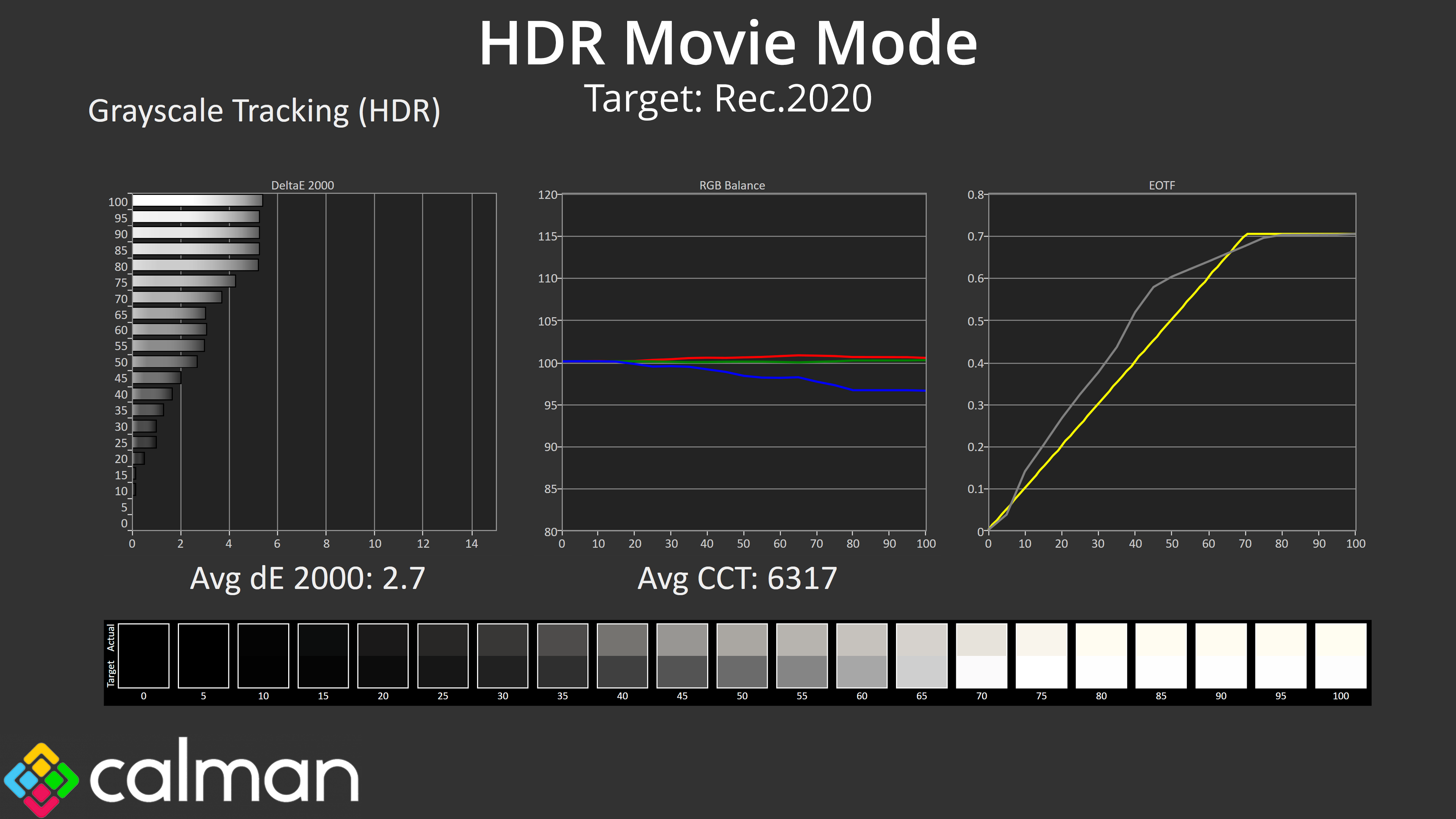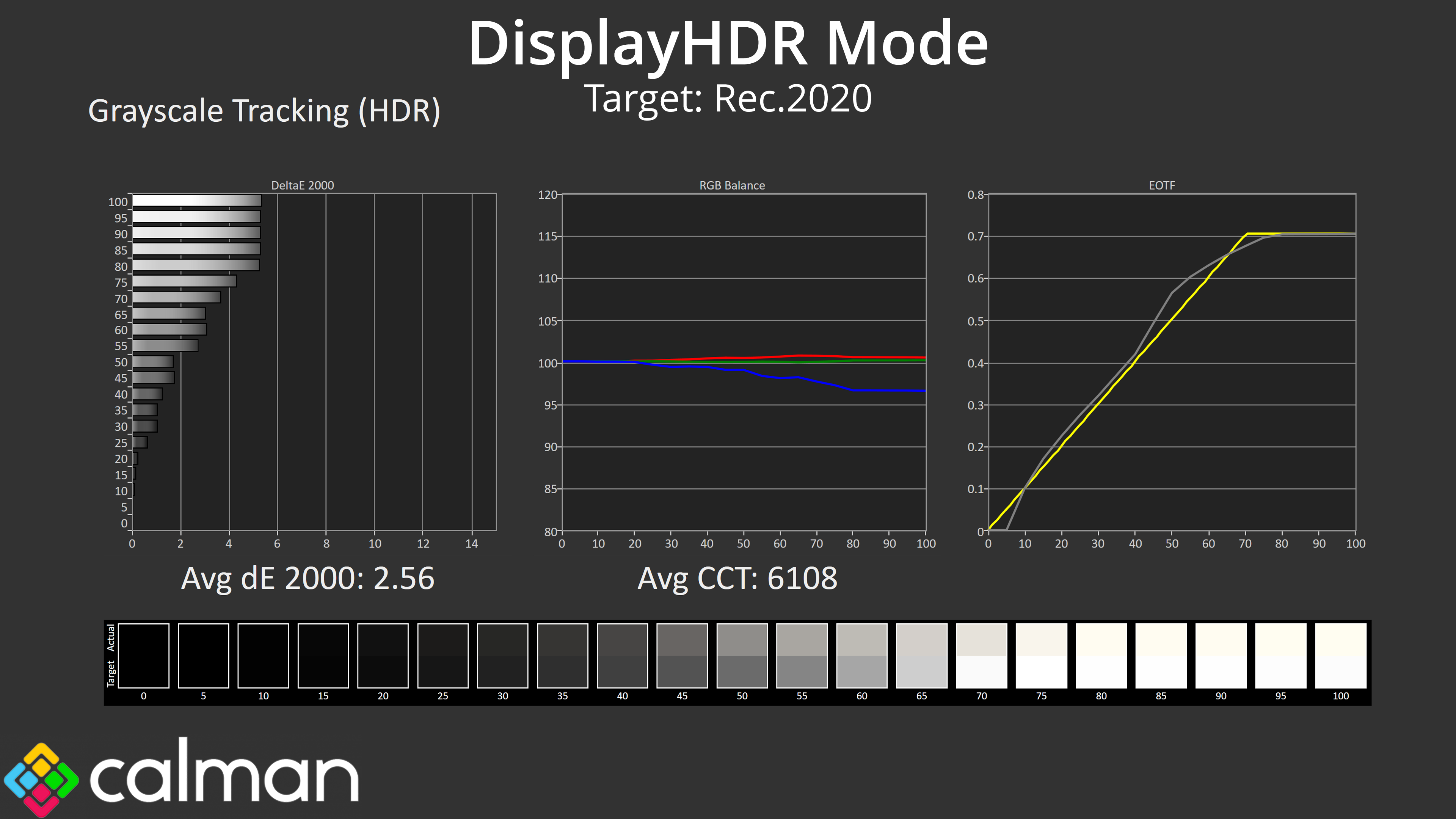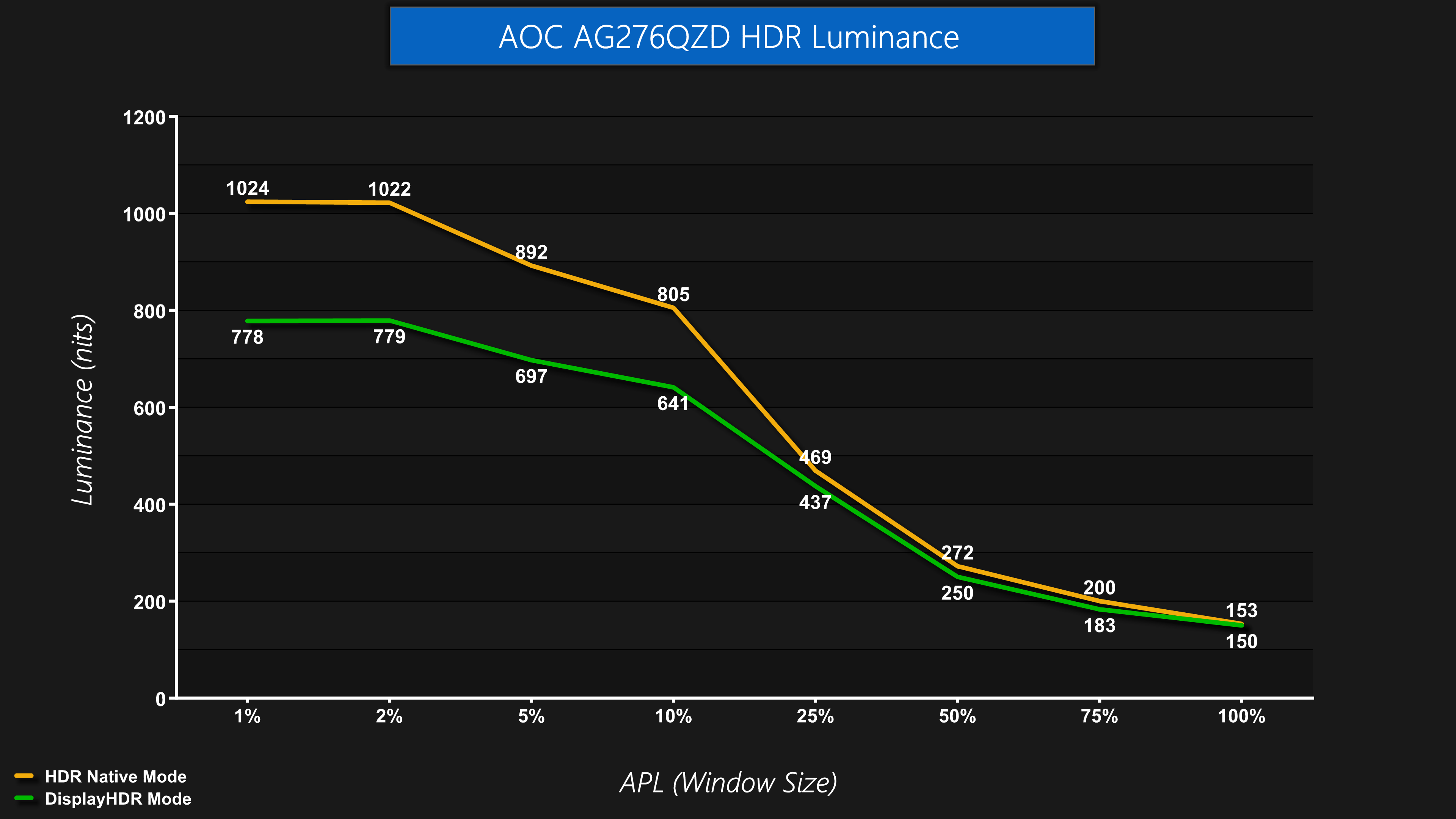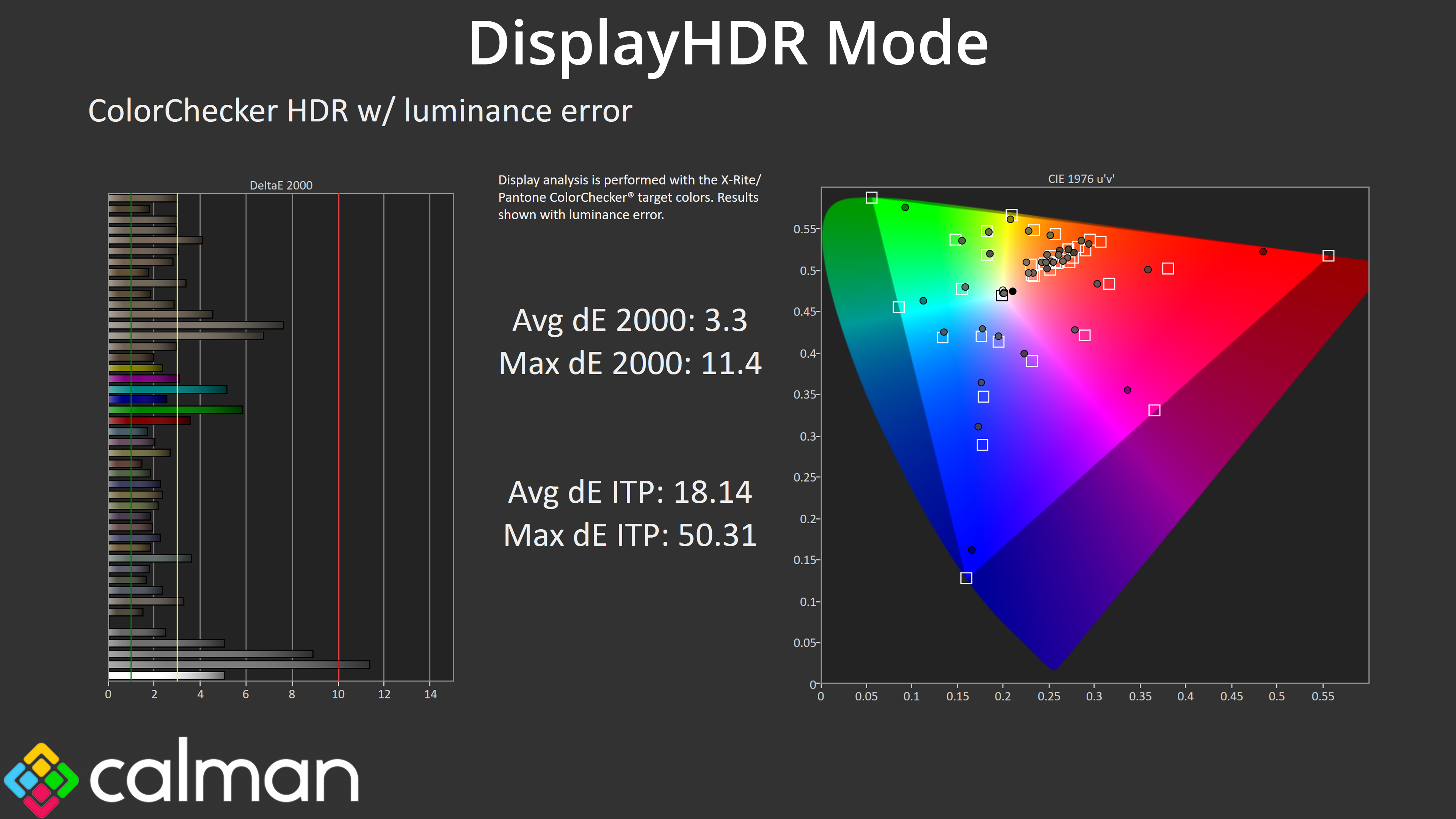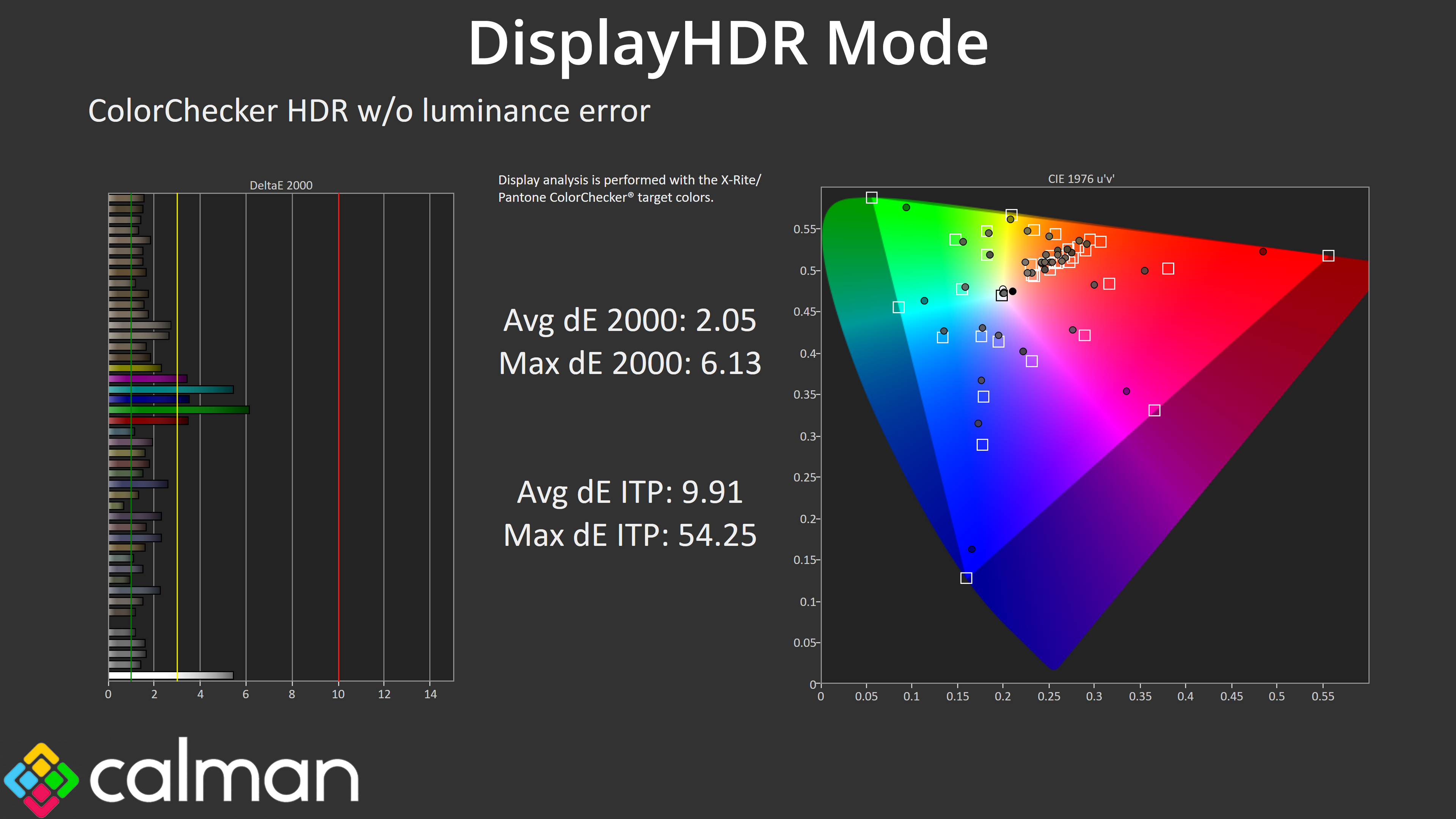HDR Testing
Following on from the SDR results on the previous page, here we re-test the relevant areas of the display with HDR enabled.
Greyscale
There's a total of five different HDR modes within the OSD for the AG276QZD. As it turns out, Game, Movie and Picture are all basically the same, and I don't recommend using those settings as they're not particularly accurate.
The DisplayHDR mode is the most accurate, with decent if not mind-blowing EOTF tracking, as it's slightly too bright across the range, but it's the best of the bunch.
Then, there is also the HDR Native mode. As you can see, this mode is way too cool, CCT hits 8385K and the image takes on a noticeable blue hue. Why bother including this mode, you ask?
Brightness
It turns out, the only reason (that I can see, at least) for the HDR Native mode to exists is so AOC can claim brightness levels up to 1000 nits. That claim is accurate as we can see here – both the 1% and 2% APLs hit just over 1020 nits when using the HDR Native mode, before dropping down as the window size increases.
However, it's such a cool colour balance I really don't recommend anyone use it. The DisplayHDR mode is the best of the bunch and its brightness is still decent for a WOLED, peaking just under 800 nits before rolling off. The 100% brightness result of 150 nits isn't great however, but is in line with what we've seen from other WOLED screens using the same panel.
Just to give you an idea of how that compared against the latest QD-OLED tech, I've compared the AOC against the MSI MPG 271QRX here. As you can see, the MSI gets brighter with the peak highlights, hitting over 1000 nits, but it is slightly dimmer for the 10% and 25% APLs, though its 50%, 75% and 100% APL results are brighter again.
Colour Accuracy
Overall colour accuracy of the DisplayHDR mode is decent though. The average dE 2000 is higher when including luminance error, as it is just a fraction brighter than it should be (as we saw from the greyscale testing above.) Removing luminance error, we see an average result of 2.05, with the biggest offenders being the cyan and green channels, which are always most problematic given no screen we have tested to-date is able to fully cover the Rec.2020 colour space.
 KitGuru KitGuru.net – Tech News | Hardware News | Hardware Reviews | IOS | Mobile | Gaming | Graphics Cards
KitGuru KitGuru.net – Tech News | Hardware News | Hardware Reviews | IOS | Mobile | Gaming | Graphics Cards


